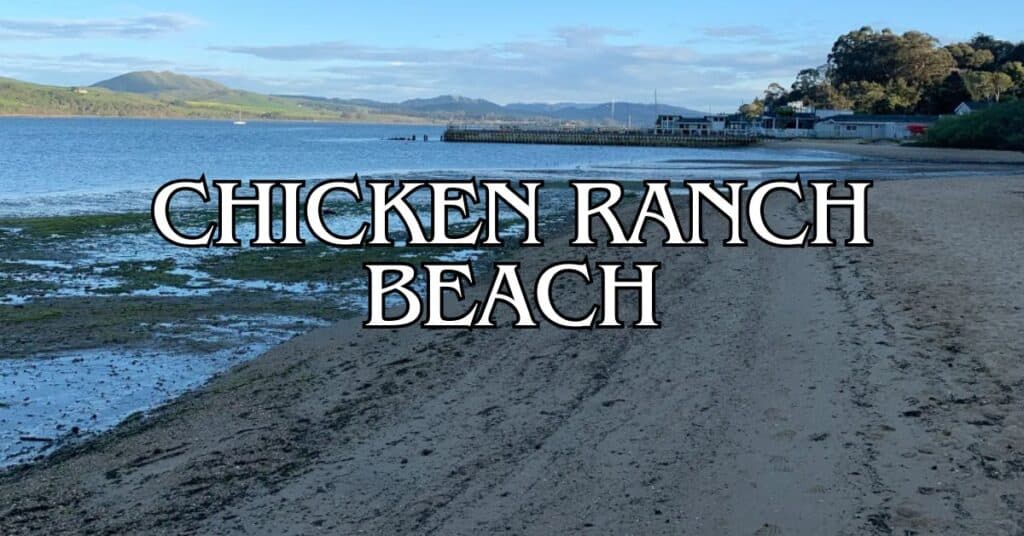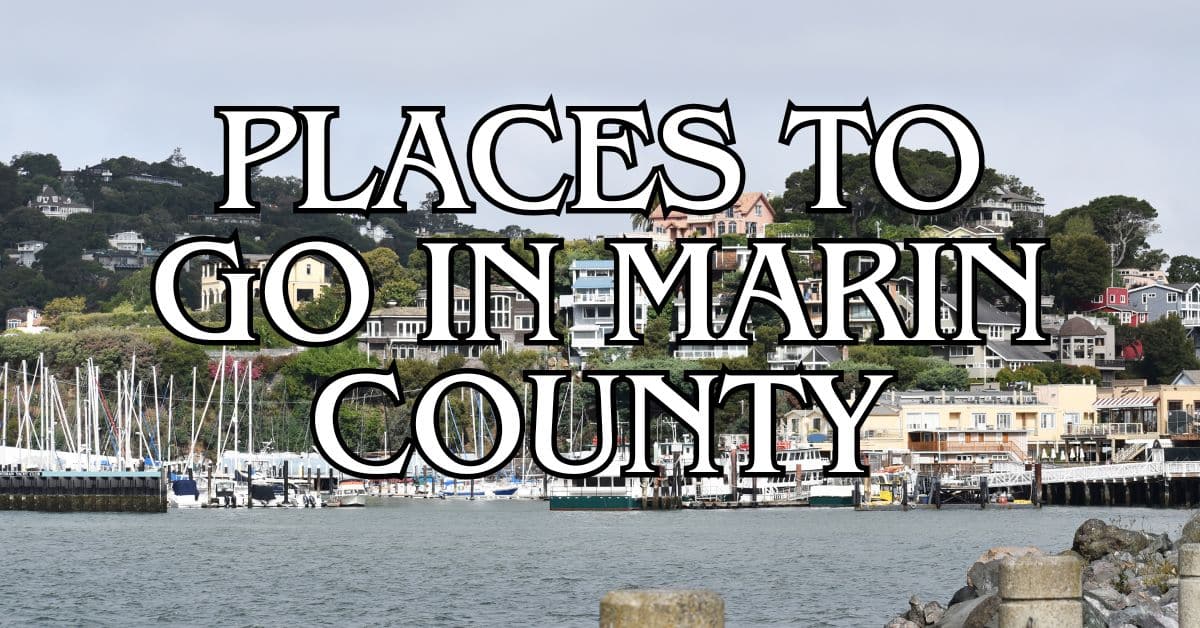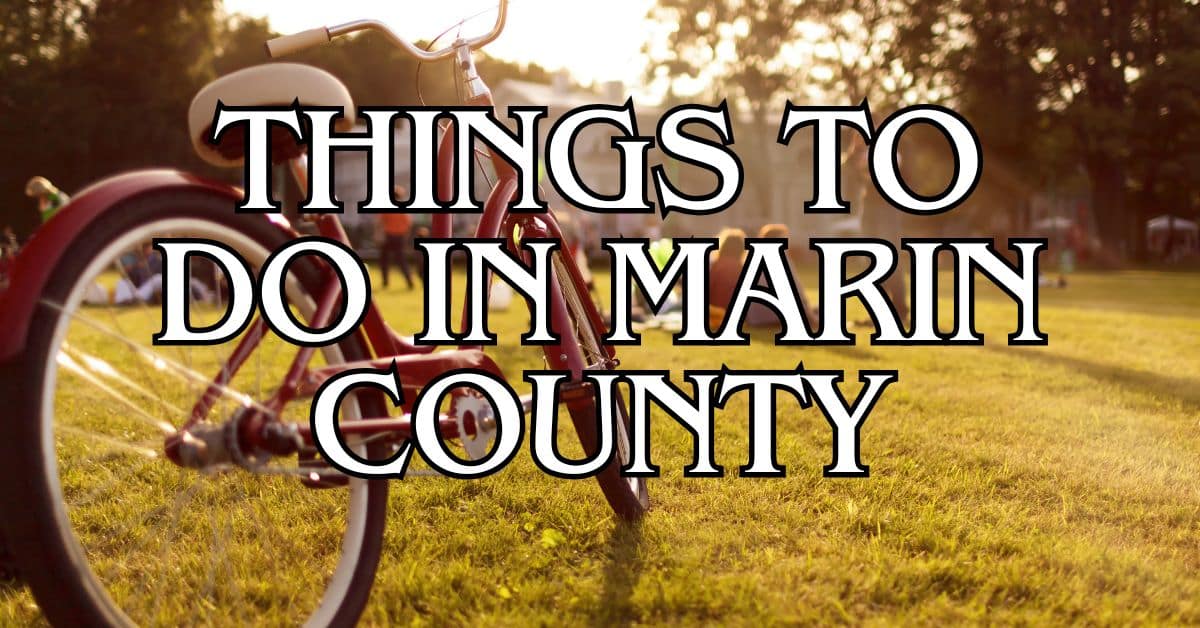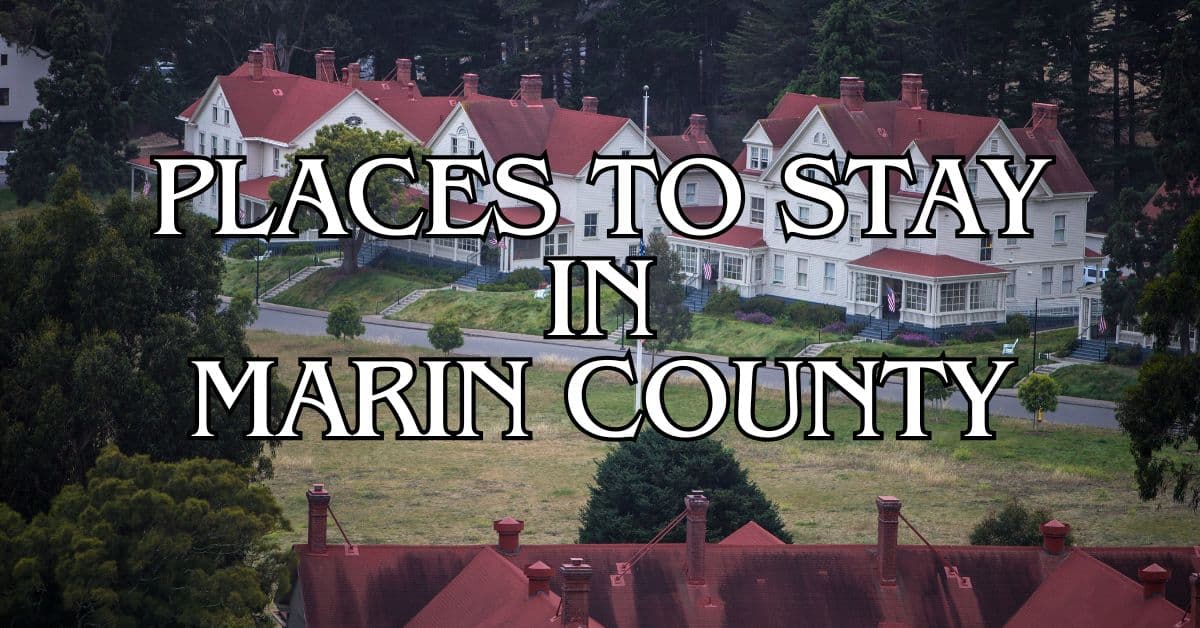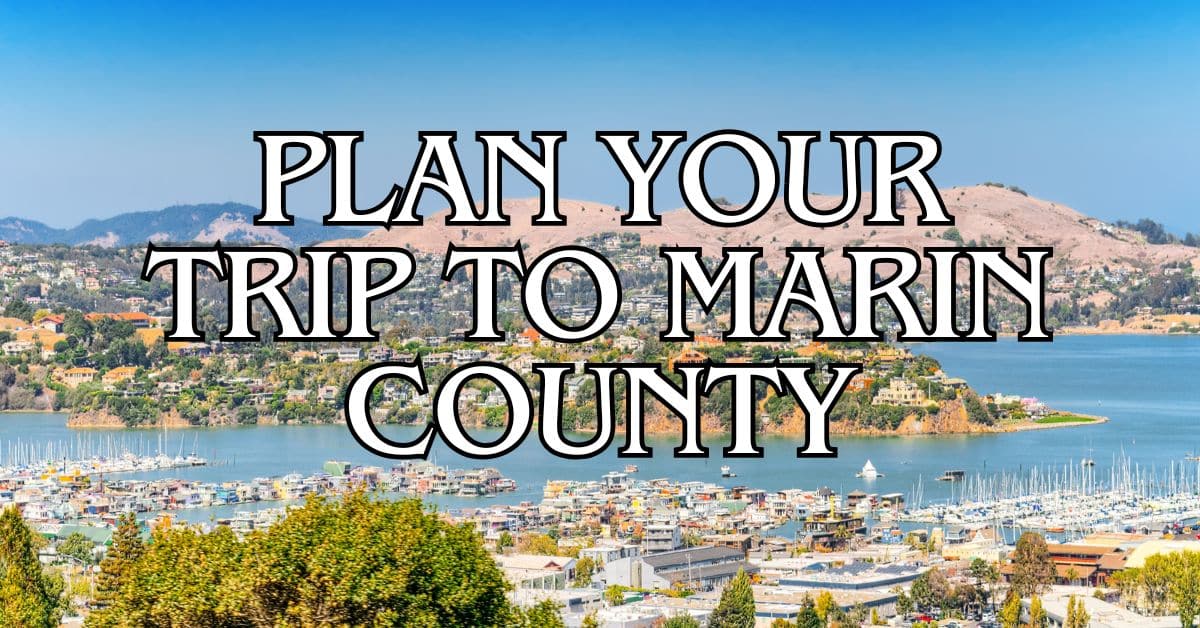Chicken Ranch Beach nestles up against Tomales Bay, just north of Inverness in Marin County. It’s one of those spots that locals love for its calm, shallow waters—especially in the summer when things warm up a bit. Families seem to flock here for the gentle waves, sandy stretches, and those classic bay views that make this one of the most laid-back, accessible beaches near Point Reyes National Seashore.
You’ll find Chicken Ranch Beach about 1.1 miles north of Inverness on Sir Francis Drake Boulevard. It’s become a go-to for folks who want a peaceful spot with kid-friendly swimming. Unlike a lot of Northern California beaches that have rough surf, this bay is protected and way safer for swimming, kayaking, or just floating around.
Discover hand-picked hotels and vacation homes tailored for every traveler. Skip booking fees and secure your dream stay today with real-time availability!
Browse Accommodations Now
A quick note—dogs are allowed but you’ll need to keep them leashed. The beach keeps things simple with only the basics, and you won’t run into the crowds you’d see at some bigger Bay Area beaches. If you’re after a quiet place to soak up the natural beauty of the California coast, this is one of those rare Marin County escapes that still feels, well, real.
Overview of Chicken Ranch Beach
Chicken Ranch Beach is tucked along Tomales Bay, offering up calm waters, sandy beaches, and a relaxed, family-friendly vibe. It’s a quieter alternative to the ocean beaches nearby—no big waves, just a mellow scene.
Location and Access
You’ll find Chicken Ranch Beach on the eastern side of Tomales Bay in West Marin, at 80 4th Street, pretty close to Inverness. There’s a short, flat path from the parking lot down to the water, so it’s easy for most people to get there.
Parking isn’t plentiful, so if you’re coming on a weekend or in summer, best to get there early. The beach is easy to reach—no long hikes or scrambling down cliffs—which is a relief if you’re lugging coolers, kids, or beach chairs.
It’s open all year, but swimming and water stuff are best in the summer when the bay heats up.
Historical Background
The name “Chicken Ranch Beach” comes from the old poultry farms that dotted this part of Tomales Bay back in the early 1900s. Farmers used to raise chickens here, taking advantage of the sheltered location.
Now, Marin County Parks manages the land, keeping it open for the public. That shift from farmland to recreation area is probably why it’s still so scenic and undeveloped.
Tomales Bay itself has a long history—fishing, oyster farming, dairy, you name it. Those old industries shaped West Marin and you can still feel their influence in the area’s laid-back, rural character.
Atmosphere and Features
It’s all about mellow vibes here. The sandy shore is great for wading and swimming, and since there’s no surf, it’s especially good for families and little kids. The water’s warmer than the ocean, especially come July and August.
Don’t expect fancy amenities. No restrooms or snack bars, so bring what you need. Dogs are allowed but leashes are a must. Popular things to do:
- Swimming in the calm bay
- Kayaking or canoeing
- Strolling the beach and watching nature
- Picnicking
The water can get muddy, and sometimes jellyfish drift in—just something to know. The views across Tomales Bay are really something, even if you’re not planning to swim. On clear days, you get both sun and those cool bay breezes.
How to Get to Chicken Ranch Beach
It’s surprisingly easy to miss Chicken Ranch Beach if you don’t know where to look, but once you’ve spotted it, you’ll wonder how you ever drove past. It’s about a mile northwest of Inverness, with a few ways to get there depending on where you’re coming from.
Driving Directions
Plug in 13000 Sir Francis Drake Boulevard—about 1.1 miles north of Inverness. If you’re coming from Point Reyes Station, head northeast on Sir Francis Drake Boulevard, go through Inverness, and after the Inverness Yacht Club, keep an eye out for a small parking area on your left. Blink and you’ll miss it.
From San Rafael, just take Sir Francis Drake Boulevard west toward Point Reyes. You’ll wind through towns like Fairfax, San Geronimo, and Lagunitas before hitting Inverness.
If you’re lost, look for cars pulled over along the road. Parking is tight, so early birds get the spots, especially on weekends.
Using Public Transit
Transit isn’t great, but it’s doable. From San Francisco or anywhere else in the Bay Area, take Golden Gate Transit to the San Rafael Transit Center. From there, hop on the West Marin Stagecoach Route 68, which runs along Sir Francis Drake Boulevard to Inverness.
The bus drops you near the beach, but they don’t run often—definitely check the Marin Transit schedule before you commit.
Biking’s an option if you’re staying in Inverness or Point Reyes Station. The ride along Sir Francis Drake is gorgeous, but the road gets narrow with some traffic, so heads up.
Scenic Drives from San Francisco
If you’re coming from San Francisco, the drive alone is worth the trip. Head north on Highway 101, cross the Golden Gate Bridge, exit at Sir Francis Drake Boulevard in Larkspur, and just keep going west.
You’ll pass through redwoods, rolling hills, and a string of small towns. Without stops, it’s about 1.5 hours each way, but honestly, you’ll want to take your time.
If you’re feeling adventurous, take Highway 1 along the coast through Muir Beach and Stinson Beach, then cut inland at Olema. The ocean views are unreal, but it’ll add about half an hour to your drive.
Bring snacks and fill up the tank before you pass Fairfax—services get scarce after that.
Best Times to Visit
Chicken Ranch Beach changes with the seasons, and when you go can totally shape your experience. Each time of year has its own quirks and perks.
Seasonal Considerations
Summer (June-August) is hands-down the best for swimming. The water warms up, and families show up in force, especially on weekends and holidays.
Spring (March-May) brings wildflowers to the hills and way fewer people. The water’s chilly, but it’s a great time for a picnic or a walk along the shore.
Fall (September-October) is kind of a secret season—mild weather, fewer crowds, and if you’re into bird watching, it’s prime time for spotting migratory birds.
Winter (November-February) is the quietest. It’s too cold for swimming, but you might have the whole beach to yourself for a peaceful walk.
Weather and Ocean Breezes
Expect daytime temps between 55-75°F, depending on the season. Summer can hit the 80s, while winter chills out in the 50s or 60s.
Ocean breezes keep things comfortable, even on warmer days, but they pick up in the afternoons. If you want calm, aim for a morning visit.
Fog’s a thing—especially in summer mornings—but it usually burns off by noon. Bring layers; the weather can flip fast with the wind and fog.
The water stays pretty calm all year, making this beach a safer bet for families and folks who aren’t strong swimmers.
Special Events and Holidays
Holiday weekends (Memorial Day, Fourth of July, Labor Day) get busy. If you want a spot, show up before 10am.
Spring wildflowers light up the hills and make for some great photos.
No big events happen here, which honestly is part of the appeal. It stays peaceful, even in summer.
Weekdays are the move if you want the quietest experience. Try Tuesday through Thursday, even in July or August, and you’ll likely have plenty of space.
Outdoor Activities
Chicken Ranch Beach is all about simple outdoor fun. The calm, shallow water and natural surroundings make it a solid spot for water play, picnics, and just being outside—no matter the season.
Swimming and Water Recreation
The water here is shallow and warms up in summer, so swimming is actually pleasant. Unlike some other Tomales Bay beaches, Chicken Ranch has gentler waves and warmer water.
If you’ve got little kids, the gradual slope is perfect for wading. It’s also a great spot to launch a kayak or paddleboard.
Mornings are usually calmest for water activities. High tide means more swimming space; low tide is better for beachcombing.
You’ll need to bring your own gear or rent from shops in Point Reyes Station or Inverness—no rentals on-site.
Picnicking and Relaxation
A few picnic tables sit under the shade right by the water. They fill up fast on weekends, so if you want one, come early.
Otherwise, just toss a blanket on the sand. The peaceful atmosphere is ideal for reading, napping, or just zoning out.
Light breezes keep it comfortable, and since the beach faces east, you’re a bit sheltered from the worst of the afternoon winds.
Facilities are minimal—pack out your trash, and the only restrooms are portable toilets in the parking lot.
Find the perfect hotel or vacation rental. Instant booking, no fees!
View Top Stays
Wildlife Watching
This place is a quiet favorite for wildlife watching. Shorebirds like sandpipers are always poking around the wet sand.
You might spot great blue herons or egrets, standing perfectly still as they fish the shallows. It’s oddly mesmerizing.
Harbor seals sometimes pop up in the bay, especially in the morning. Look for their round heads bobbing in the water, but they usually keep their distance.
Bring binoculars if you want a closer look at birds. Early morning or evening is best for wildlife. Just remember to keep your distance and let the animals do their thing.
Fishing Opportunities
There’s no fishing pier, but you can try your luck from the shore. The calm bay has perch, bass, and halibut.
You’ll need a California fishing license—grab one online or at a local shop.
Fishing’s usually better on incoming tides when fish come closer to shore. Check the tide charts before you go.
Light tackle works for most fish here. If you plan to keep your catch, bring a cooler with ice. And as always, pay attention to size and catch limits.
Nearby Parks and Natural Attractions
Chicken Ranch Beach is in the middle of some of California’s wildest, most diverse landscapes. There’s a lot to explore nearby, from coastal trails to hidden lagoons.
Point Reyes National Seashore Highlights
Point Reyes National Seashore sprawls over 71,000 acres just minutes from Chicken Ranch Beach. It’s got everything—coastal cliffs, sandy beaches, grasslands, forests.
The famous Point Reyes Lighthouse sits on a dramatic headland. Whale watching is best from January to April and September to November. Be ready for a workout—there are 308 steps down to the lighthouse, but the view is worth it.
If you want to see tule elk, head to Tomales Point. The 9.5-mile roundtrip trail is the best way to spot them, especially during the fall rut.
And if you’re into geology, don’t skip the Earthquake Trail—a short 0.6-mile loop that shows off scars from the 1906 San Francisco earthquake, right along the San Andreas Fault.
Tomales Bay and Bolinas Lagoon
Tomales Bay, home to Chicken Ranch Beach, runs about 15 miles and acts as a natural line between the mainland and Point Reyes Peninsula. The calm, protected waters are fantastic for kayaking—rentals are easy to find in Inverness just up the road.
The bay’s oyster farms are legendary. You can slurp fresh oysters at spots like Hog Island Oyster Company, and many of these places let you bring your own snacks and drinks for a picnic.
Bolinas Lagoon Preserve lies just south of Point Reyes. It’s a sprawling tidal estuary covering 1,100 acres and draws more than 245 bird species. Harbor seals and migrating shorebirds rely on this place.
If you’re into birding, there’s a roadside pullout on Highway 1 that’s kind of a hidden gem. Bring binoculars—mornings are best, when the birds and seals are most lively.
Other Notable Beaches
Limantour Beach stretches for 2 miles, backed by gentle dunes. Its protected waters make it a favorite for families, though the water’s always brisk. There are restrooms and picnic tables, so you can make a day of it.
Drakes Beach stands out with its white cliffs and is one of the more sheltered spots for swimming. The Kenneth C. Patrick Visitor Center here has displays on the area’s history—worth a quick look.
Want something quieter? Try:
- North Beach: Open, breezy, great for wandering and finding shells
- Kehoe Beach: Dog-friendly, with a half-mile walk in
- McClures Beach: Rugged, wild, and the surf is no joke
- Palomarin Beach: Gateway to the Alamere Falls trail
Marshall Beach, tucked away on Tomales Bay, is a low-key alternative to Chicken Ranch Beach—same calm water, but usually fewer people.
Hiking and Trail Experiences
Marin County’s got a huge range of hiking options near Chicken Ranch Beach, from easy strolls to tough, multi-day treks. The Point Reyes National Seashore trails deliver some knockout views of Tomales Bay and the Pacific.
Point Reyes Trails
Point Reyes is packed with coastal trails. Tomales Point Trail (4.5 miles one way) has stellar ocean views and, if you’re lucky, tule elk sightings. It’s mostly flat but can get blustery.
Abbott’s Lagoon Trail (2 miles roundtrip) takes you through diverse habitats out to a tranquil lagoon and beach—prime territory for birdwatching and wildflowers in spring.
Mount Wittenberg Trail is a tougher 5-mile loop with about 1,300 feet of climbing. The summit (1,407 feet) gives you sweeping views of the Pacific and Tomales Bay.
Estero Trail (8 miles roundtrip) leads to a stunning estuary and usually sees fewer hikers.
Easy Strolls Near Chicken Ranch Beach
The main trail at Chicken Ranch Beach is just a half-mile out-and-back, flat and easy. Most folks finish it in under 10 minutes.
Close by, Tomales Bay Trail is a gentle 2-mile walk with uninterrupted water views—great for families or anyone wanting a quick nature fix.
Limantour Beach Trail is another easy 2-mile walk right along the sand. It’s wide, flat, and perfect for soaking in the ocean air.
Shorter trails like these are nice for a warm-up before tackling longer hikes, or just as a laid-back way to end a day at the beach.
Multi-Day Backpacking and Camping Routes
Point Reyes is a backpacker’s dream, with hike-in campgrounds like Sky Camp, Coast Camp, Glen Camp, and Wildcat Camp. You’ll need to book these well ahead—sometimes up to 6 months out.
A classic route runs from Palomarin to Wildcat Camp (6.3 miles), then on to Coast Camp (another 6.7 miles). Expect dramatic cliffs, hidden beaches, and all kinds of wildlife.
Looking for fewer crowds? Start at Five Brooks and head to Glen Camp (4.6 miles). This inland trail winds through forests and meadows.
Permits go quick, especially for summer weekends. All campgrounds have water and toilets, but you’ll be carrying your own food and cooking gear. Weather shifts fast out here, so bring layers and rain gear, no matter what the forecast says.
Wildlife and Nature Observation
Chicken Ranch Beach is a great spot to catch Marin County’s wildlife in action. The calm bay and safe shoreline bring in a wide range of creatures year-round.
Birdwatching and Nesting Sites
Shorebirds love Chicken Ranch Beach. You’ll see sandpipers and plovers darting around the water’s edge, poking for snacks in the sand. Great Blue Herons and Great Egrets often stand statue-still in the shallows, waiting for a fish.
In spring and summer, keep an eye on the trees and brush for nests. Ravens and Red-tailed Hawks are always around. And now and then, you might spot a Bald Eagle soaring overhead—these majestic birds are showing up more often these days.
Binoculars help a lot. Early mornings or late afternoons are prime time for bird activity. The nearby Audubon Canyon Ranch protects even more habitat for birds.
Marine and Terrestrial Mammals
Harbor seals regularly swim in Tomales Bay near Chicken Ranch Beach. Sometimes you’ll catch them lounging on rocks at low tide. Give them space—at least 100 feet—since they’re protected.
From December through May, Gray Whales migrate past the outer bay. You probably won’t spot them from the beach, but nearby overlooks offer a shot.
On land, rabbits and ground squirrels scurry around the brush. Tule Elk live farther out on the Point Reyes peninsula, so you’ll need to hike a bit to see them.
Seasonal Wildflowers and Plants
Come spring, the approach to Chicken Ranch Beach bursts with color—yellow lupines and California poppies everywhere.
Plants that can handle salt thrive where fresh and saltwater meet. Look for pickleweed, which turns reddish late in the summer. These plants help filter runoff and give shelter to critters.
Native grasses and shrubs line the beach, holding the sand in place and supporting bugs that feed the birds. If you pay attention, you’ll notice how the plant life shifts as you move from the shore up the hillside.
Local Towns and Community
Marin County’s small towns near Chicken Ranch Beach all have their own style, but share the laid-back, natural vibe of the region. You’ll find good food, friendly people, and plenty of character.
Point Reyes Station
Point Reyes Station is the main stop for folks heading to Chicken Ranch Beach. It’s got a little bit of Western charm and a lot of artsy energy.
Main Street is lined with indie shops selling handmade goods, outdoor gear, and local eats. Toby’s Feed Barn is a quirky mix of feed store, coffee bar, and art gallery.
Luxury stays to cozy cottages await, all with instant booking. Find the best deals!
Browse Marin Stays
On Saturdays, the farmers market brings together local farmers and artisans. You’ll find everything from fresh oysters to organic veggies and cheese.
The town feels relaxed and unhurried—never too touristy. It’s a great place to grab picnic supplies before you hit the beach, which is just a 10-minute drive.
Bolinas and Stinson Beach
Bolinas and Stinson Beach each offer their own spin on coastal living, just a short drive from Chicken Ranch Beach.
Bolinas has an off-the-grid, slightly rebellious spirit—there’s not even a sign for the turnoff. The town is dotted with colorful cottages, garden plots, and a tiny downtown with a handful of shops and cafes. Locals love the surf break here.
Stinson Beach is a bit more built up, with a broad sandy beach that’s great for swimming or just stretching out. The village has beach shops, a grocery store, and a few casual restaurants.
Both towns put on art festivals and community events throughout the year. The drive from Chicken Ranch Beach offers some of the best coastal scenery around.
Dining and Food Options
West Marin’s food scene is all about local flavor—literally. Farms, dairies, and fisheries supply most of what’s on your plate.
In Point Reyes Station, Osteria Stellina does Italian-inspired plates with local ingredients. Cowgirl Creamery is famous for its award-winning cheeses. For something quick, Bovine Bakery and Station House Café are both solid choices.
Inverness, close to Chicken Ranch Beach, has Saltwater Oyster Depot for fresh seafood and a cozy vibe. The Inverness Park Market makes sandwiches that are perfect for a beach day.
Bolinas has Coast Café, which serves up seasonal dishes, while Stinson Beach’s Parkside Café offers casual meals with a view of the ocean.
Most places here lean into sustainable, farm-to-table cooking. If you’re visiting on a summer weekend, definitely make a reservation—things fill up fast.
Lodging and Accommodations
You’ve got options near Chicken Ranch Beach, from rustic cabins to upscale inns.
Point Reyes Station has the historic Point Reyes Station Inn and a handful of B&Bs set in gardens. Olema House, nearby, is a bit fancier and has a well-regarded restaurant.
For privacy, vacation rentals in Inverness are close to Chicken Ranch Beach. Many spots have bay views and are tucked away in the woods.
If you prefer camping, check out Samuel P. Taylor State Park (redwoods!) or the hike-in campgrounds at Point Reyes National Seashore—just remember, those require reservations.
HI Point Reyes Hostel is a good choice if you’re on a budget. In summer or over holidays, book your stay three to six months out—rooms disappear quickly in these small towns.
Safety, Regulations, and Conservation
If you’re headed to Chicken Ranch Beach, it’s important to know the safety basics and follow the rules that keep both visitors and nature safe. There are specific regulations about what you can do, potential hazards in the water, and conservation efforts that help preserve this place.
Swimming Safety and Water Conditions
The water at Chicken Ranch Beach is cold—sometimes as low as 50°F (10°C). That’s cold enough to cause hypothermia, even in summer.
If you’re swimming:
- Always check current conditions
- Don’t swim alone
- Stay close to shore
- Keep a close eye on kids
Tomales Bay is usually calm, so you won’t get big waves, but there are no lifeguards. Currents can still be strong, especially when the tide’s changing.
Water quality changes during the year. Marin County has done a lot to improve things, but it’s smart to check recent reports before you take a dip.
Environmental and Wildlife Protection
Chicken Ranch Beach sits in a delicate ecosystem. Wildlife and plants here need a light human touch.
Not allowed:
- No barbecues or open flames
- Don’t take shells, plants, or anything natural
- Don’t bother wildlife
- Pack out all your trash
The wetlands and beach are critical for birds, especially during migration. Give all animals space. If you see a seal or other marine mammal on the sand, leave it be—it could be resting or unwell.
After past oil spills, conservation efforts ramped up in Tomales Bay. If you notice pollution, let park authorities know right away.
Permits and Reservations
Chicken Ranch Beach doesn’t charge entrance fees or require special permits for day use. The parking lot, though, is tiny and fills up fast—especially on weekends and holidays.
If you want to reserve a picnic spot, you can do that online through the Marin County Parks website, up to a year ahead, but only for certain areas. The actual beach? First-come, first-served.
Groups larger than 25 should reach out to Marin County Parks for permission. Got plans for commercial photography or filming? You’ll need a permit from the county.
Finding the entrance isn’t always obvious. There’s no sign, so you’ll have to watch for small pullouts along Highway 1. Just make sure you’re not blocking traffic or someone’s driveway.
Planning Your Visit
A little planning goes a long way at Chicken Ranch Beach. The calm water and mellow vibe are great year-round, but knowing what to bring—and when to show up—makes a big difference.
What to Pack
Bring the basics. You’ll want:
- Towels and blankets for lounging on the sand
- Sun protection—think sunscreen, hats, maybe an umbrella
- Water shoes (the rocks can surprise you)
- Reusable water bottles (hydration is key)
- A small cooler with snacks and lunch
- Binoculars if you’re into bird watching on Tomales Bay
- Kayak or canoe if you’re up for some paddling
It gets chilly, even in summer. I’d throw in a light jacket and maybe a change of clothes, especially if you’re visiting when the weather’s unpredictable. Layering is your friend here.
Travel Tips for Families
With its gentle water and no surf, Chicken Ranch Beach is a win for families. If you can swing a weekday, you’ll dodge the crowds. Early mornings are especially peaceful.
Beach toys keep kids happy in the sand and shallow water. The bay warms up a bit in summer, which is nice for young swimmers.
A pop-up tent works well for shade, especially if you’ve got little ones—there’s not much natural cover. Most families stay around 2–3 hours. Bring your own snacks and drinks; you won’t find food vendors nearby.
If you want to make a day of it, swing by Point Reyes Station for lunch or a scoop of ice cream.
Accessibility Information
Accessibility’s decent but not perfect. The parking area’s small and fills up, so get there early if you can.
It’s a short, mostly flat walk from the parking lot to the beach, manageable for most. The path isn’t paved, though.
There aren’t beach wheelchairs available, so if you need mobility help, you’ll have to bring your own.
Facilities are bare-bones—just portable toilets, no changing rooms or showers.
Dogs can come along but have to stay on leash. Bring waste bags and clean up after them.
No lifeguards here. Keep a close eye on kids and swim at your own risk.
Exploring Beyond Chicken Ranch Beach
Chicken Ranch Beach is pretty mellow, but Marin County’s packed with other places to check out. The area’s loaded with dramatic coastlines, historic spots, and trails that show off the region’s wild side.
Chimney Rock and Lighthouse
Chimney Rock trail is one of Point Reyes’ most scenic hikes. It’s a 1.8-mile round trip along cliffs with big views of Drakes Bay and the Pacific. Spring brings wildflowers all over the hills.
Nearby, the old Point Reyes Lighthouse—built in 1870—still stands. You’ll have to tackle 308 steps to get there, but the ocean views (and maybe a whale sighting) are worth it.
Expect wind and fog, sometimes even in summer. The visitor center at the lighthouse dives into local maritime history and natural features. Hours change with the seasons, so check ahead.
Visit Alamere Falls
Alamere Falls is one of those rare “tidefalls” where the water drops straight onto the beach. The hike starts at Palomarin Trailhead near Bolinas and follows the Coast Trail.
It’s about 8 miles round trip, winding through coastal scrub, little lakes, and woods. The last bit gets tricky—expect a scramble down a rough, unmaintained path.
The main waterfall plunges 40 feet onto the sand, with smaller ones upstream. If you want the falls at their best, aim for winter or spring when there’s plenty of rain.
Bring lots of water and snacks. Cell service is spotty, so download your maps before you go. The parking lot fills up fast on weekends—early birds get the spot.
Nearby Scenic Outlooks
Mount Vision offers some of the area’s most sweeping panoramic views. From the summit, you can spot Tomales Bay, Point Reyes, and sometimes even the Farallon Islands if the weather’s clear. You can drive up, so most folks can enjoy the lookout.
Sir Francis Drake Boulevard is a gorgeous drive, winding through towering forests, rolling hills, and meadows.
Pierce Point Road takes you out to the Tule Elk Reserve, where herds of elk roam the grasslands. There are plenty of pull-offs for photos.
Fall and winter usually mean clearer skies once the fog lifts. Binoculars come in handy for spotting wildlife and distant landmarks.
Geology and Natural History
Chicken Ranch Beach sits along Tomales Bay, a place shaped by some pretty wild geologic forces. The landscape here tells a story of earthquakes, shifting plates, and a coastline that’s always on the move.
Earthquake History and Geology
Tomales Bay owes its long, narrow shape to the San Andreas Fault—one of Northern California’s most active earthquake zones. This is where the Pacific Plate and North American Plate meet, creating a visible rift.
Back in 1906, the San Francisco earthquake shook things up in a big way. Land near Chicken Ranch Beach shifted as much as 20 feet sideways. You can still spot signs of this seismic drama in the landscape.
The beach itself sits on sedimentary rocks that were once the ocean floor. Over millions of years, these rocks got pushed up, squeezed, and reshaped by the earth’s movement. That’s how you get the unique bluffs and formations around here.
Formation of Tomales Bay and the California Coast
Tomales Bay took shape around 10,000 years ago, right after the last ice age. As sea levels crept up, water flooded the valley carved out by the San Andreas Fault, and that’s how we ended up with the long, narrow bay we see now.
Chicken Ranch Beach sits where a small creek meets the bay. As years rolled by, sediment from both the creek and the bay gradually piled up, eventually forming the sandy spit and beach area that folks like to visit.
The California Coast is always shifting. Waves, tides, and currents keep working on Chicken Ranch Beach, sometimes changing its shape bit by bit, and sometimes—especially after a wild winter storm—reshaping it almost overnight.
This dynamic coastal environment is home to all sorts of habitats. The beach links up with tidal zones, marshlands, and coastal prairies, all of which make this part of Northern California’s coastline feel alive and, honestly, pretty unique.
Find available hotels and vacation homes instantly. No fees, best rates guaranteed!
Check Availability Now


